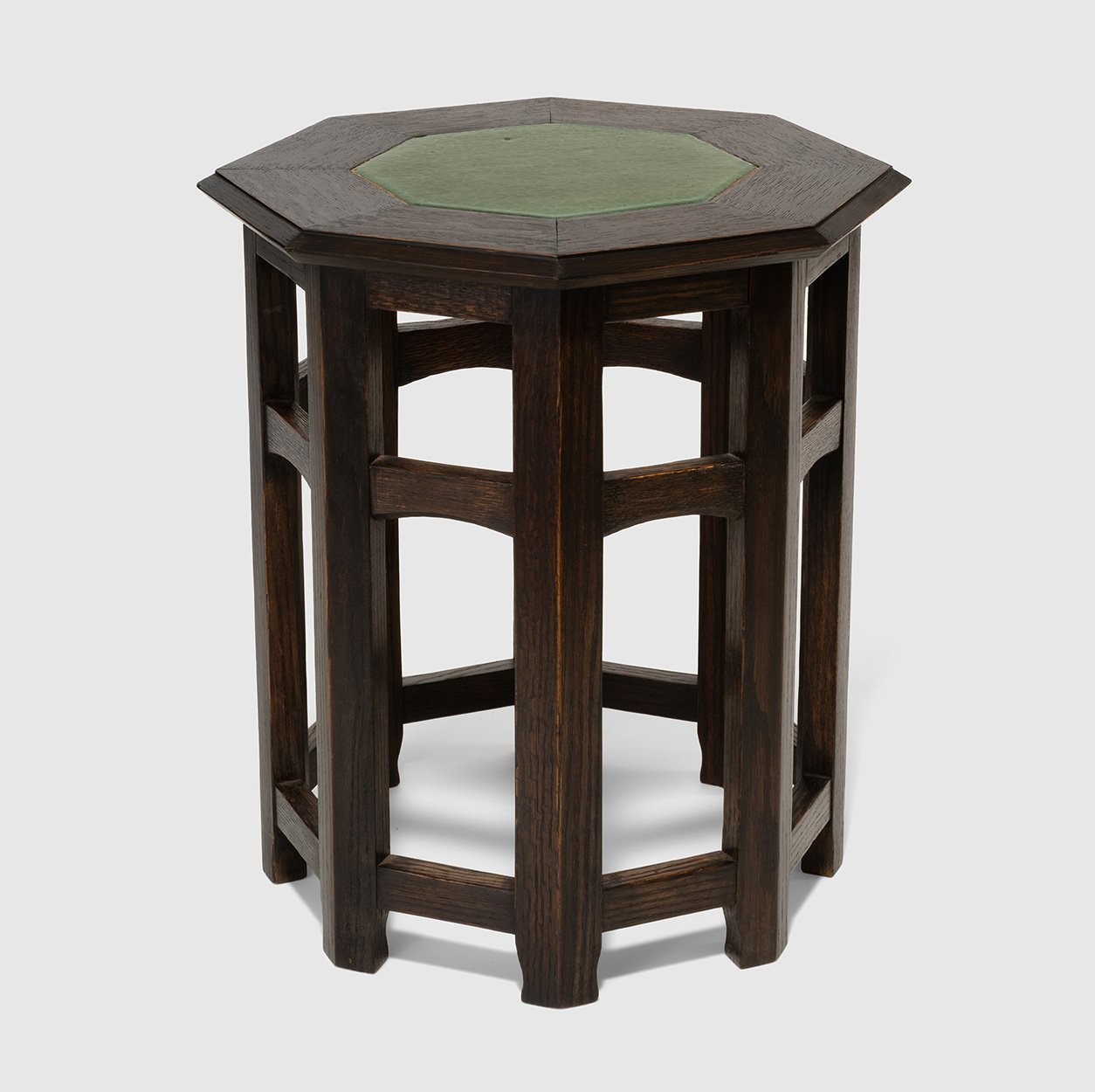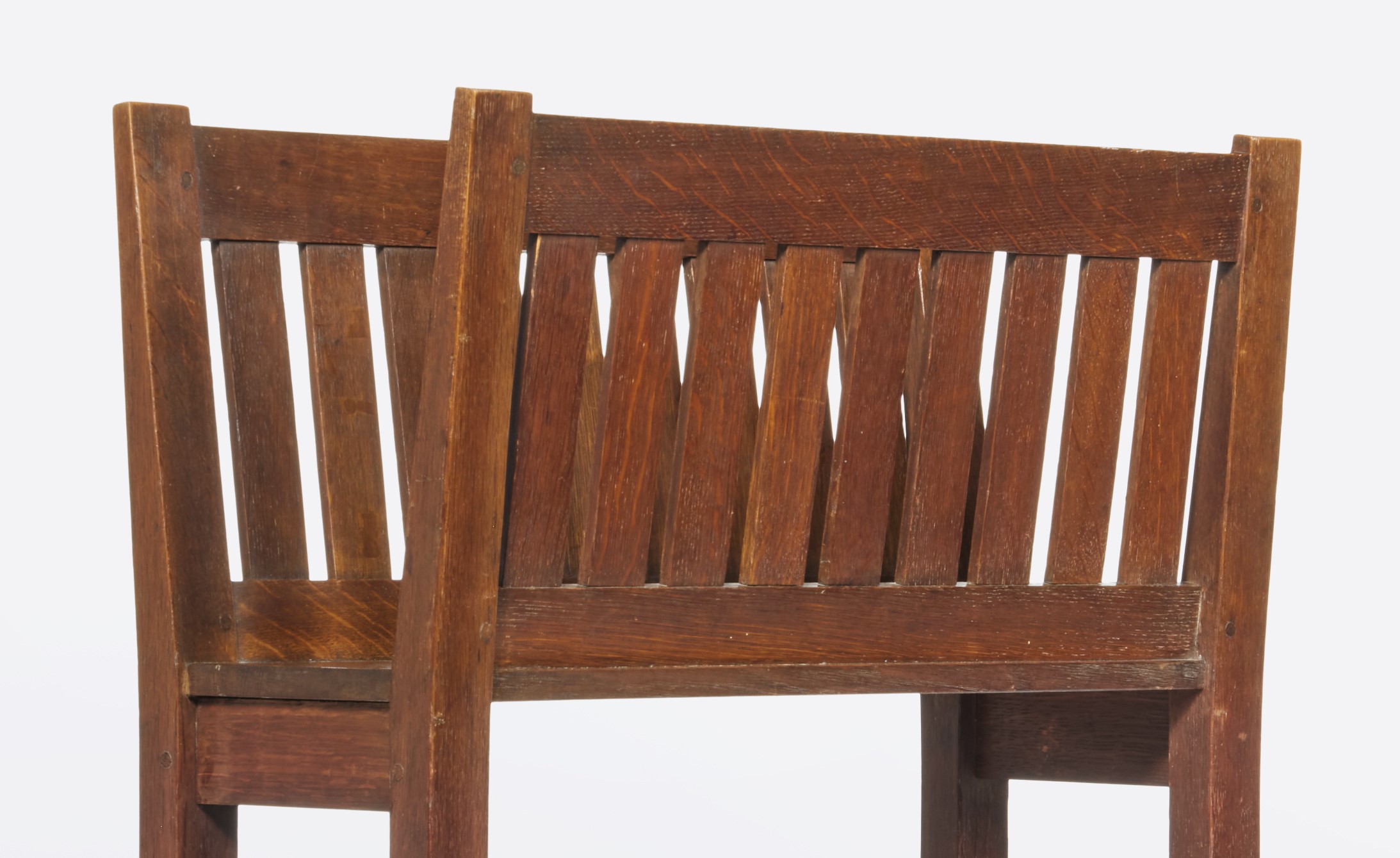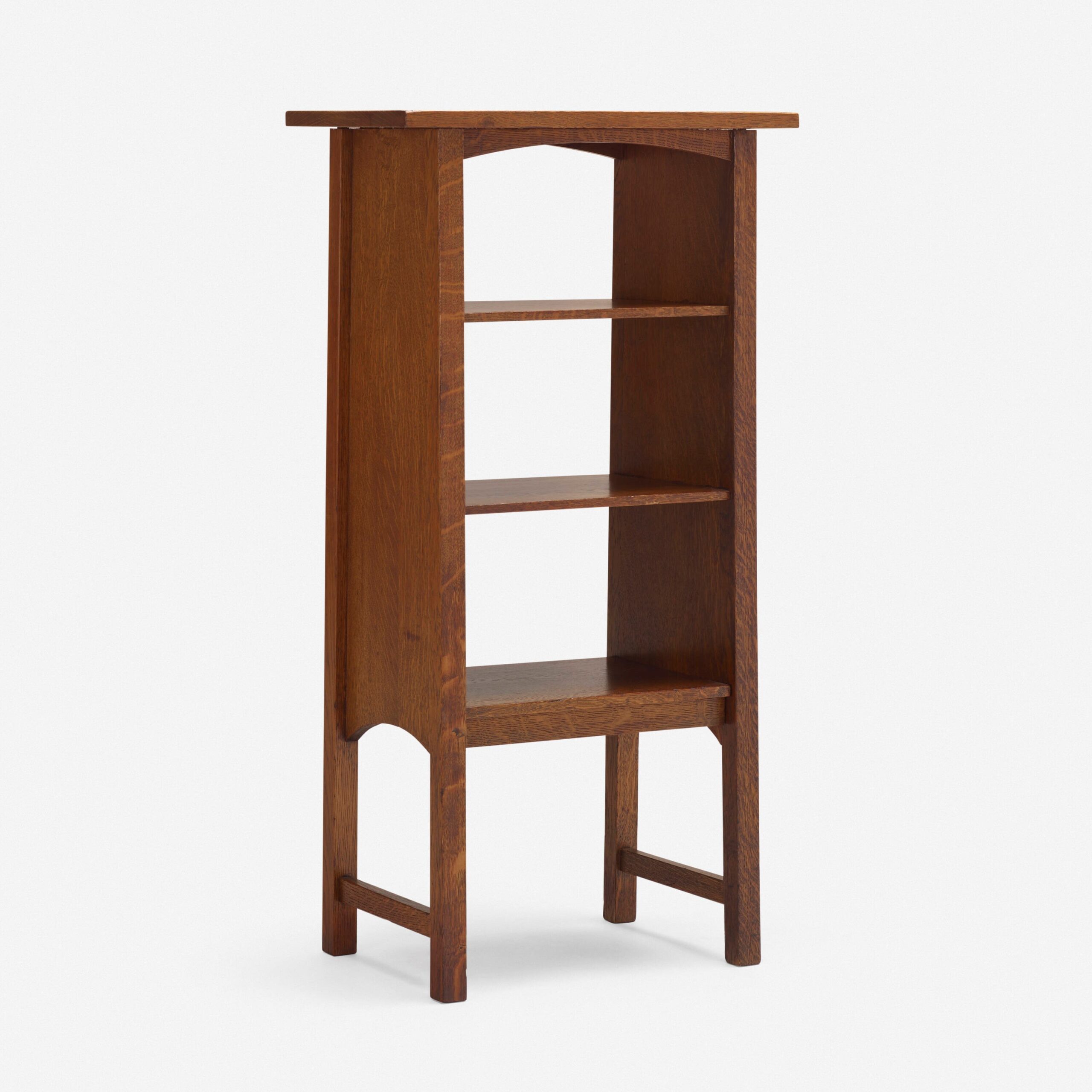
ONLINE COURSE: “BECOMING STICKLEY”
ONLINE COURSE FOR FALL 2023
COURSE DESCRIPTION
These five sessions take a deep dive into the formative period in Gustav Stickley’s career and explore the choices and decisions that marked his transformation as a designer over his early Arts and Crafts period. Starting in 1900, when he issued the catalog New Furniture from the Workshop of Gustave Stickley and ending with the standardized aesthetic of 1904’s Cabinet Work from the Craftsman Workshops: Catalogue D, we will move year by year through this early work to better understand the how he resolved the competing impulses of historicism and innovation to make him a leading American producer of this new style. Like Stickley, we will navigate the ideals of pure design–unfettered by economic realities–against the realities of running a factory, securing the necessary labor, and making objects that balanced the movement’s idealism with modern consumer preferences. By looking at the paths he chose–as well as those avenues he abandoned–we will arrive at a better understanding of Stickley’s history, his aesthetic, and how the movement flourished in the early twentieth century.

ABOUT THE INSTRUCTOR
Jonathan Clancy is the Director of Collections and Preservation at the Stickley Museum at Craftsman Farms. An author, educator, and curator Clancy received his doctorate in art history in 2008 from the Graduate Center. Formerly Director of the MA in American Fine and Decorative Arts program at Sotheby’s, he left in 2017 to form an advisory group. As an independent consultant, he has worked with private clients and institutions on collection management, exhibition planning, label writing and research, and valuation.
Registration is required. Once registered and paid, you will receive an email prior to each session with a link to join.
Do you have a scheduling conflict for the live session? You can still enjoy the program. Register and we’ll send you the recording! All paid attendees will be emailed a private link to the session recording when it is available, typically 4-5 days after the live program.
Missed us? You can also register retroactively. If you register for a session that has passed, you’ll receive access to the recording when it is ready.
Haven’t tried a session yet? Each session is planned as a “stand-alone” lecture, so you can take them all or attend the topics that interest you most.
5 Sessions for $25/ Session
Best Price! All 5 Sessions for $99 (Savings of Over $25)
SCHEDULE
| 1 | Sat., Oct. 21, 2023 | While many point to 1900’s New Furniture from the Workshop of Gustave Stickley as heralding a new commitment to the aesthetic and ideals of the Arts and Crafts movement, this is a notion that relies exclusively on hindsight rather than careful consideration of the forms he made. In many ways, this session argues, the catalog is a perfect illustration of a man conflicted, torn as it were between the thrill of the new and the comfort and security of the past. Moments of radical innovation in the catalog sit along side the Jacobean revival, Japoniste, historicist, and floral forms he created. This catalog–rather than showing he leapt into the Arts and Crafts fully formed–demonstrates a kind of restless curiosity indicative of a man searching for his own aesthetic. |  Workshop of Gustave Stickley, Damascus Plant Stand (no. 9), designed 1900. The Robert Kaplan Collection. |
| 2 | Sat., Oct. 28, 2023 | 1901 was a critical year in Stickley’s development that saw him rename his from “The United Crafts,” exhibit at the Pan-American Exposition in Buffalo, begin publication of The Craftsman, and issue at least two additional catalogs and a set of retail plates. While the absence of floral tables and historicizing designs that filled much of the New Furniture catalog indicate a real change in aesthetic, this is largely rhetorical. For while Stickley no longer promoted them, customers continued to order them (and the factory continued making them) through at least 1904. The picture of Stickley that emerges is not one of a radical making a clean break with his past, but instead of a practical businessman who promotes his new designs without alienating the customer base that preferred his older ideas. This year also signaled the earliest iterations of some of his most enduring forms that were gradually refined in later periods. |  United Crafts, Small Rocker (no. 2609), designed 1901. The Stickley Museum at Craftsman Farms. |
| 3 | Sat., Nov. 11, 2023 | One of the themes inherent in the broad arc of Stickley’s development is a move away from eccentric experimentation towards a standard, recognizable aesthetic. Especially evident in the forms photographed for The Craftsman and 1902 retail plates, there is an emphasis on solidity, massiveness, and heft that is seen across the forms. While we often think of this as essentially an aesthetic unity, we can be somewhat blind to the efficiencies this created within in the factory and the potential for cost-savings this engendered. That Stickley, ever mindful of both, chose this year to invest in a dovetailing machine is indicative of precisely how he sought to navigate the tensions inherent in creative work in a factory setting. This session explores these forms and ideas and takes a broad view of standardization that encompasses the aesthetic choices and the practice of making furniture to form a richer history of how Stickley’s aesthetic emerged. |  United Crafts, Paper Rack (no. 551), designed 1902. Sotheby’s. |
| 4 | Sat., Nov. 18, 2023 | Stickley’s transformation from a chairmaker to tastemaker is both remarkable and unexpected, since there is little in his history that previously pointed this direction. Yet, by 1903, he seems to have realized that while The Craftsman may not have been the vehicle for social and political change that Irene Sargent dreamed of, it could become a source for ideas about interior design, accessories, and even architecture. Freshly back from his trip to Europe, he mounted an Arts and Crafts exhibition in Syracuse and Rochester that explored these new potentials, and signaled a shift away from simply furniture and embraced the home as a work of art. It is during this year too that major developments in his textiles, metalwork, and furniture take hold and embrace a more graceful, less severe line. This session is a deep dive into 1903, beginning with his Arts and Crafts exhibition and ending with the emergence of inlaid furniture. |  Craftsman Workshops, Five Light Electrolier (no. 223), designed 1904. Rago Arts and Auction. |
| 5 | Sat., Dec. 2, 2023 | By 1904, Stickley had come into his own and issued Cabinet Work from the Craftsman Workshops: Catalogue D, his largest catalog to date that featured over 170 forms. In addition, that year’s What is Wrought in the Craftsman Workshops–published under the auspices of the “homebuilders club”–emphasized his desire to succeed as a tastemaker, the head of a firm capable of designing and building your home and supplying the interior furnishings and accessories. Here too, we witness the result of the fervent experimentation that marked the previous years into a refined style that preserved some earlier forms and made them more efficient to make and market. This year marked the beginning of a decade remarkable for its aesthetic and financial stability, something that had previously eluded Stickley as a chairmaker. |  Craftsman Workshops, Magazine Stand (no. 72), designed 1904. Toomey & Co. |
5 Sessions for $25/ Session
Best Price! All 5 Sessions for $99 (Savings of Over $25)
MORE INFORMATION
Craftsman Farms, the former home of noted designer Gustav Stickley, is owned by the Township of Parsippany-Troy Hills and is operated by The Stickley Museum at Craftsman Farms, Inc., (“SMCF”) (formerly known as The Craftsman Farms Foundation, Inc.). SMCF is a 501(c)(3) not-for-profit organization incorporated in the State of New Jersey. Restoration of the National Historic Landmark, Craftsman Farms, is made possible, in part, by a Save America’s Treasures Grant administered by the National Parks Service, Department of the Interior, and by support from the Morris County Historic Preservation Trust, The New Jersey Historic Trust, and individual donors. SMCF received an operating support grant from the New Jersey Historical Commission, a division of the Department of State and a grant from the New Jersey Arts & Culture Recovery Fund of the Princeton Area Community Foundation. Educational programs are funded, in part, by grants from the Arts & Crafts Research Fund.




